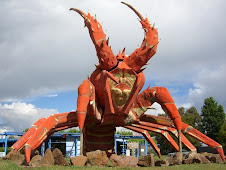 Extracted from Wikipedia:
Extracted from Wikipedia:Dragons may be mental representations of natural human fears of snakes, wildcats, birds of prey, as well as teeth, claws, size, and even venom blending with fear of wildfire. Others believe that the dragon may have had a real counterpart from which the various legends arose — typically dinosaurs or other archosaurs are mentioned as a possibility — but there is no physical evidence to support this claim, only alleged sightings collected by cryptozoologists. Loren Coleman argues that monitor lizards were the basis of some dragon tales and that the breath of the dragon is the fantastic imagery of the steam from the warm Montane Valley monitors emerging from a body of water into the cold air of some Asian locations.
Dinosaur and mammalian fossils were occasionally mistaken for the bones of dragons and other mythological creatures — for example, a discovery in 300 BC in Wucheng, Sichuan, China, was labeled as such by Chang Qu.

No comments:
Post a Comment